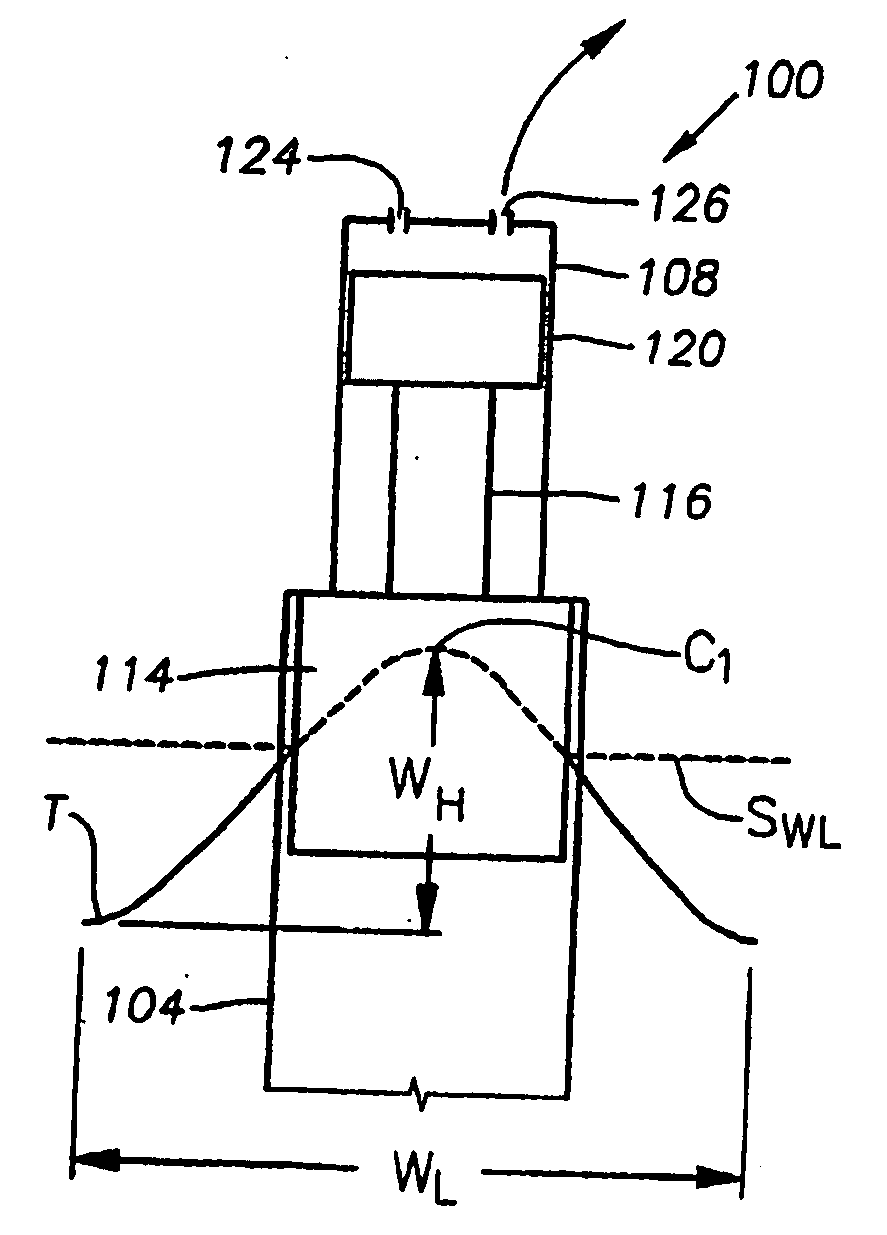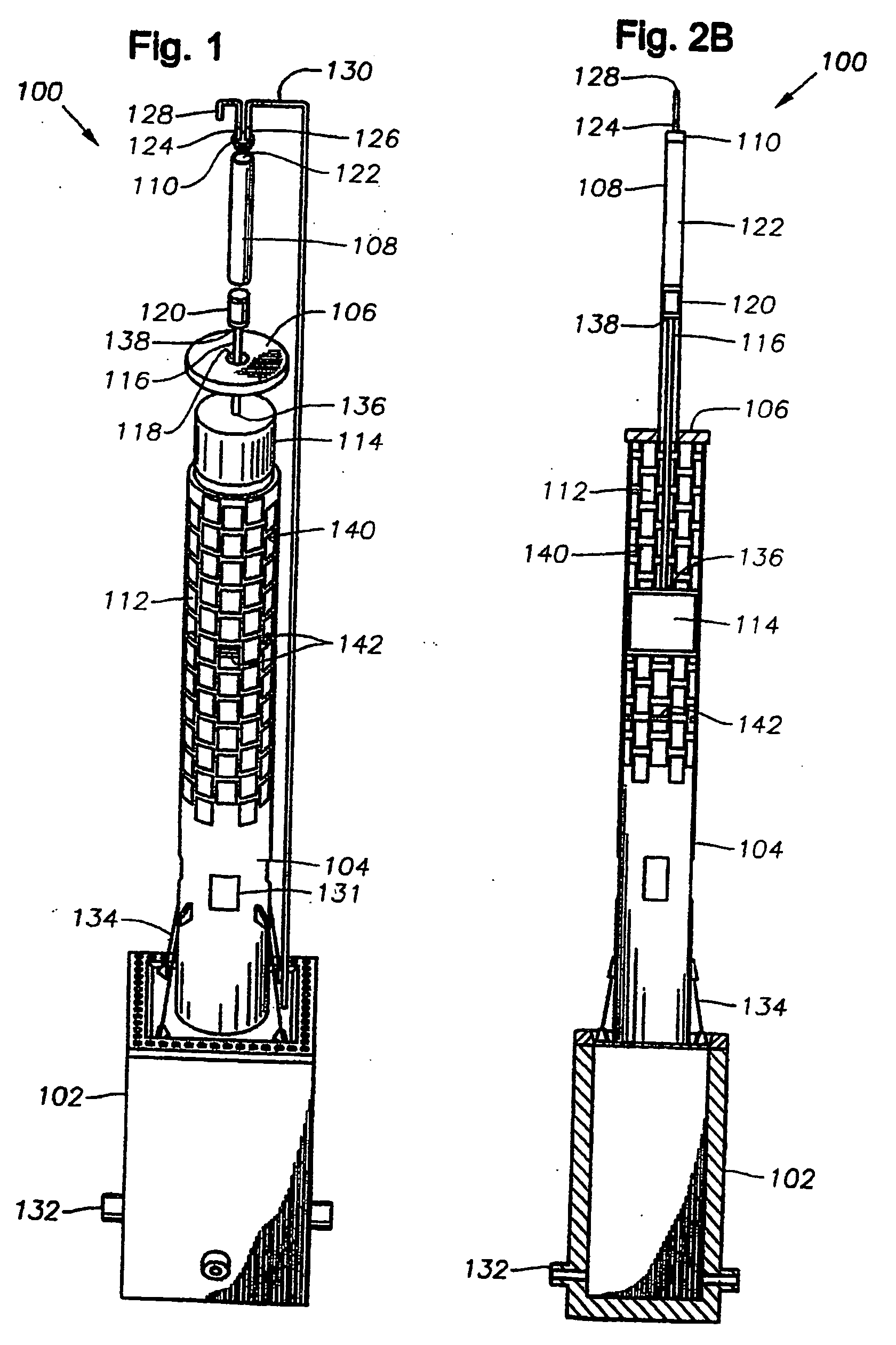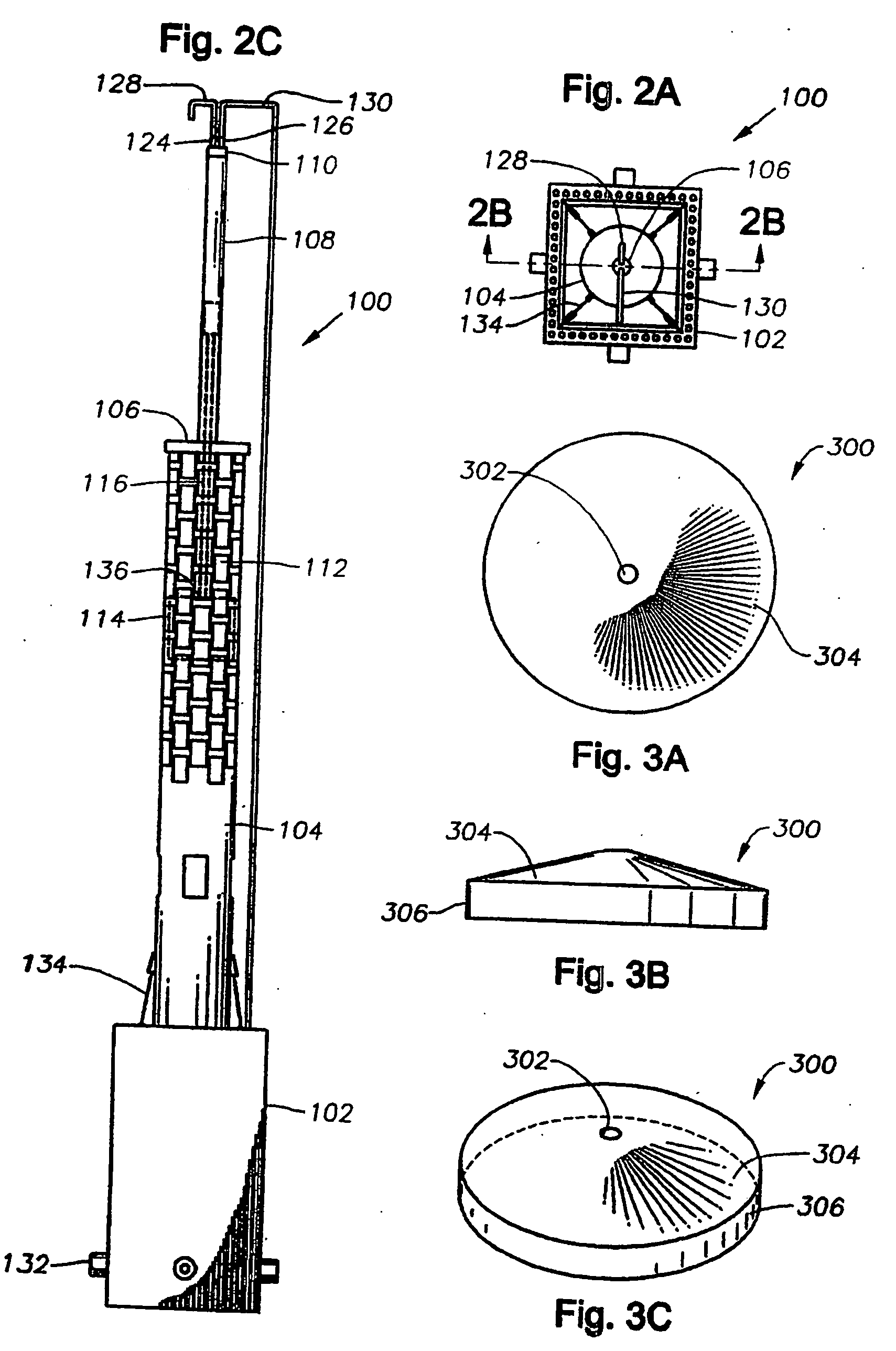Buoyancy pump power system
a power system and pump technology, applied in the direction of electric generator control, positive displacement liquid engine, fluid coupling, etc., can solve the problems of limiting the placement of the system, system undesirable, and each system is replete with problems
- Summary
- Abstract
- Description
- Claims
- Application Information
AI Technical Summary
Problems solved by technology
Method used
Image
Examples
example a
Low Wave Size
1. Wave Horsepower
[0114] Referring more specifically to FIGS. 4A-4D, wave horsepower (Wave HP) is determined for a wave (W) traveling over a distance of one-half the wave length (½ WL) as follows:
Wave HP=[(WV)(D) / (HP)](WS)
where [0115] WV(Wave Volume)=(WW)(WD)(WH)(gallons water / ft3) [0116] WW=Wave Width (½ WL)=17.5 feet [0117] WD=Wave Depth=17.5 feet [0118] WH=Wave Height=5 feet
and [0119] D=density of water (8.33 lbs / gal)
and [0120] HP=horse power unit (550)
and [0121] WS=Wave Speed (½ WL / WT)
and [0122] WT=Wave time to travel ½ WL (7.953 sec).
[0123] For example, the wave depth (WD) is assumed to be equal to the wave width (WW) so that the profile of the wave (W) will completely cover the buoyancy block 114′ which is cylindrical in shape. For the numbers indicated above which are exemplary, the calculations are as follows:
Wave HP=[(11,453 gal)(8.33 lbs / gal) / (550)](2.2 ft / sec)=382
where [0124] WV=(1,531 ft3)(7.481 gal / ft3)=11,453 gal; and [0125] WS=(17.5 feet...
example b
Average Wave Size
[0182] The above-exemplary calculations were made with an exemplary buoyancy block 114′ having a fixed diameter (d1) depending on the geometry of the buoyancy block 114′ and height (h1+h2). It is to be appreciated that the wave height (WH) varies for different locations and for different times during the year at each location. Thus, it is desirable to reconfigure or adjust this buoyancy block based on the varying wave characteristics as described above. To ensure high efficiencies, the height and / or diameter of the buoyancy block 114′ can be adjusted. For example, the buoyancy block 114′ can be designed or adjusted to increase the height of its base 104′a (h1) and related diameter to accommodate waves having a greater wave height (WH) as will be described below.
[0183] Assuming that the wave height (WH) increases from 5.0 ft. to 9.016 ft. (an average sized wave), the height of the buoyancy block base (h1) is increased by 1.5 ft. (see FIG. 4D), i.e., the “warp” of t...
PUM
 Login to View More
Login to View More Abstract
Description
Claims
Application Information
 Login to View More
Login to View More - R&D
- Intellectual Property
- Life Sciences
- Materials
- Tech Scout
- Unparalleled Data Quality
- Higher Quality Content
- 60% Fewer Hallucinations
Browse by: Latest US Patents, China's latest patents, Technical Efficacy Thesaurus, Application Domain, Technology Topic, Popular Technical Reports.
© 2025 PatSnap. All rights reserved.Legal|Privacy policy|Modern Slavery Act Transparency Statement|Sitemap|About US| Contact US: help@patsnap.com



